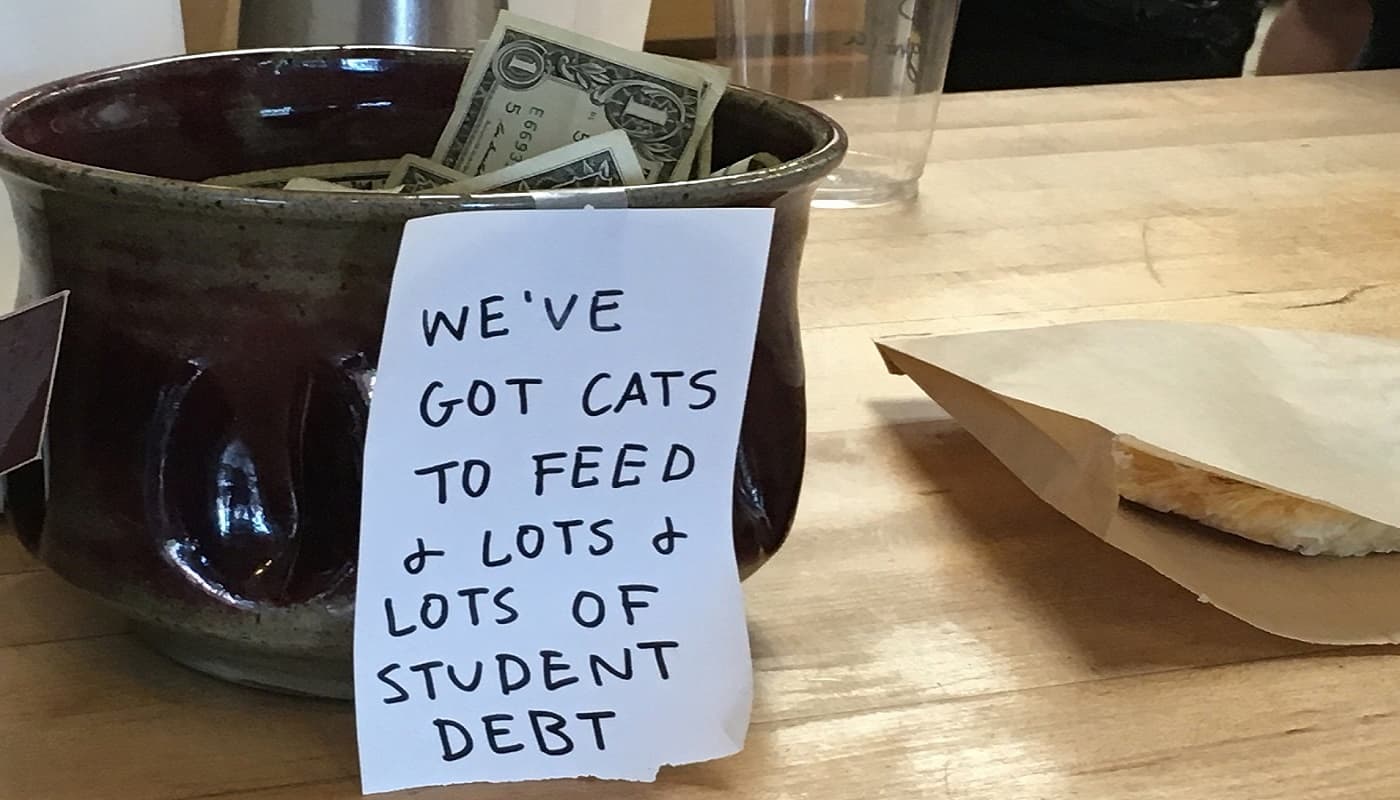4 simple and creative ways to ask for tips at your business
Editorial Team
6 min read
Tipping. It’s been a central part of our food and dining experiences for decades. Times, however, are changing: in the wake of the pandemic, tipping culture has extended significantly beyond dining services to become prevalent across industries. Increasingly, customers are overwhelmed by the number of places where they now have the option to tip and feel pressure about whether to add a gratuity and for how much.
This pressure customers feel, paired with the economic reality we live in, can create an awkward situation for you as a business owner whose employees depend on tips as part of compensation. While the last thing you want to do is make your customers feel obligated to spend more than they budgeted for by expecting them to tip, that doesn’t mean you need to do away with tipping altogether.
For those in the service industry, there are many ways to make the tipping experience fun, creative, and engaging for your customers, without adding extra pressure.
Here are our four favorite tip jar ideas to help you continue to reward employees and put a smile on your customers’ faces.
To tip or not to tip?
Tipping culture is constantly evolving in the restaurant, service, and retail industries, and every business is different. That means there isn’t a one size fits all answer. So, whether you’re wondering how to get more tips or if tipping should even be a part of operations, knowing the pros and cons can help you determine what’s best for your business.
Pros of tipping
- Provides additional income: Tipping can provide an additional source of income for employees, especially in industries where wages are relatively low. It allows customers to directly reward good service and show appreciation.
- Improves motivation and performance: Tipping can serve as an incentive for employees to deliver excellent customer service. The prospect of earning tips may encourage staff to go the extra mile, enhancing overall customer experience.
- Offers price flexibility: Consistent tipping creates an additional revenue stream and makes room for you to lower product prices slightly. This can be more appealing for potential customers and get more people in the door.
Cons of tipping
- Sets unclear expectations: Tipping is a personal choice, so when customers feel obligated to tip, it can lead to uncertainty about how much to tip and in what situations.
- Creates inconvenience: Tipping imposes an additional financial burden on customers. Sales and customer relationships are the lifelines for small businesses. Tip pressure can make customers feel obligated to pay more than they are comfortable with. Maybe they intentionally chose your store from your competitors because of your cheaper prices only to wind up paying more because they felt pressured to tip.
How to get more tips without asking
Tipping isn’t a chore. It’s a compliment and a thank you for good service. You never want your customer to feel obligated or expected to tip, which is why most effective tip jars are the ones that create an enjoyable experience for your customers. Here are a few of our favorite ideas for a tip jar.
1. Crowd please with polls
Want to turn tipping into a fun game? Appeal to people’s natural competitiveness and humor with this or that tip jars. Set up two tip jars next to each other and pose a new question every day that revolves around hot topics. There are countless tip war ideas to choose from: sports, TV shows, or pop culture. This is an opportunity to appeal to both a general or more niche customer base depending on your business: Lakers or Warriors? Hamburgers or hot dogs? 1989 or 2023 Little Mermaid? Hulu or Max? These light-hearted questions give your customers an opportunity to engage in some friendly competition, have a laugh, or even spark conversion with your cashier or barista. There’s a reason these can be among the most effective tip jars!
2. Incentivize tipping with fun customer perks
Using a tip jar near your POS system, create engaging “benchmarks” with various incentives for the total sum of all the tips at the end of the day. For example, on your tip jar, mark three or four lines evenly spaced up to the top of the jar. For the first line, put a small treat that tippers can earn if their tip reaches the line first. This can range from a free sticker to a free cookie. The incentives should increase in size with each rung. Not only does this turn tipping into a game, but it makes it collaborative. Say you work at a bakery and decide to have the highest mark be “20% off coffee on Friday,” it’s in every repeat customers’ interest to contribute in hopes of reaching that deal.
3. Appeal to customers’ natural curiosity
Let’s face it, helping someone out feels good. There’s no denying that. This is especially useful for small businesses with just a handful of staff. When a customer tips, they are either starting or building a connection to your staff. It becomes more personal. By using the tips jars as a way for customers to learn about staff, it builds an even stronger bond. One way this works is by highlighting a different staff member each day. So, you would tape that employee’s fact sheet to the tip jar. It can include name, fun fact, and what they’re saving up for (i.e., college, a car, a trip). Customers will feel like they know your staff on a deeper level and can contribute to the goal that they’re saving for.
4. Lean into laughter
Make your customers laugh with funny tip jar signs and relevant puns: “They say laughter is the best medicine, but is it the best way to encourage tips? If you ask us, we say the answer is yes!” Who doesn’t love a good laugh? There’s something to be said about sticking to the basics and creating a funny tip jar sign to entertain customers each day. Bonus points if you can think of some clever industry-specific jokes.
Tipping can be an essential part of a small business’ financial model, but that doesn’t mean it can’t be fun and lighthearted. At a time when we are all busy and our wallets are stretched thin, you want your tip jars to be memorable, eye-catching, and engaging. When customers have the choice to tip and aren’t tipping out of obligation, they may feel better about giving back and supporting your business.
Other articles you may like
- 5 tips for updating your tipping policy to retain employees
- Tip pooling and tip splitting: The complete guide for restaurant owners
- Understanding the 80/20 tip rule
Related Posts
Make “Kids Eat Free” work for your restaurant
How to choose a restaurant marketing agency
Popular Topics
Stay in touch
Sign up and learn more about Clover.
Thank you for your subscription!
More posts about starting a small business
eBook





